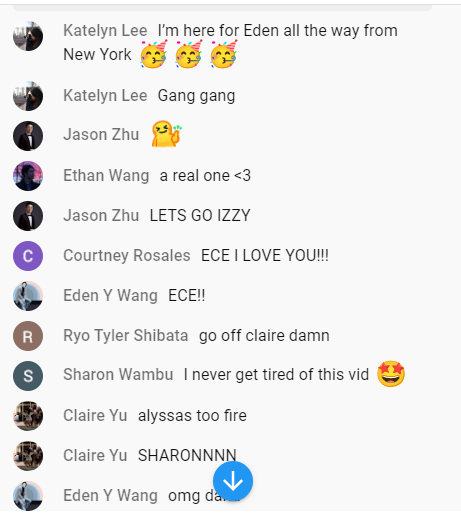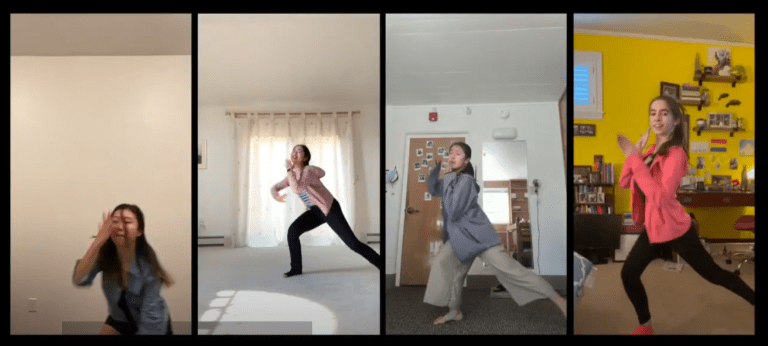Courtney Rosales ’23 set her phone down against a stool and clicked the red “Record” button. She felt the upbeat music wash over her as she began to groove, swaying her arms left and right to what would become one of many dances in a virtual show called Choreo Days, hosted by Common Origins, Stanford’s largest non-audition dance group. Rosales and others produced a 30-minute lively performance that was live-streamed on July 30 and 31.
Featuring new and experienced, individual and group dancers, Choreo Days showcased choreography and freestyle in casual settings like kitchens, living rooms and backyards.
“It’s a really casual, fun environment,” Common Origins co-president Eden Wang ’23 said. “We encourage people to put themselves out there to record the choreo, practice and learn it and then to share it with the team and the broader community.”
Stanford dance groups Legacy, Alliance, Dv8, Innovative Styles, XTRM and Stanford Chinese Dance showed off matching outfits in performances recorded individually or socially distanced. Legacy and Alliance’s memorable performances consisted of individual recordings stitched together through video editing that switched between dancers on the beats of the music. The performance of XTRM was particularly impressive: The dancers’ masked choreography in all-black suits, matched with the somber filter and music, kept the audience captivated and feeling the mood.
The idea of a virtual showcase was first introduced in mid-June. After finalizing the plan in early July, the Common Origins team began accepting dancers, experienced and new. The Common Origins team offered choreography mentoring for anyone who wanted to learn choreography or simply needed tips on their own choreography. In the virtual setting, the team found that it was more difficult for people to feel comfortable sharing their work.
“During the normal in-person year, we have showcases at the end of each quarter, and these showcases found opportunities to really work toward having a set to show off,” Wang said. “But, that really gets complicated during an online year because it’s super difficult to coordinate pieces, to coordinate dance and choreography and then positioning and stitching all of that together.”
In non-pandemic times, Choreo Days is a hyper-supportive environment where people are open to showcasing their dancing, Wang added. Online, however, it was more difficult to cultivate that setting and get people to feel comfortable sharing their work.

But whatever nerves the dancers may have felt, on show day, dancers, choreographers and the team flocked to see the accumulation of six weeks of hard work and to support one another. The smiles on the dancers’ faces, as well as the exciting, encouraging comments in the livestream chat, contributed to a heartwarming environment.
“It’s nice to have other people see it and get excited by it,” Rosales said. “I think it’s a really joyful communal experience, which has been a lot harder digitally, but this was a moment where I thought that, even virtually, I very much felt that sense of community again.”
